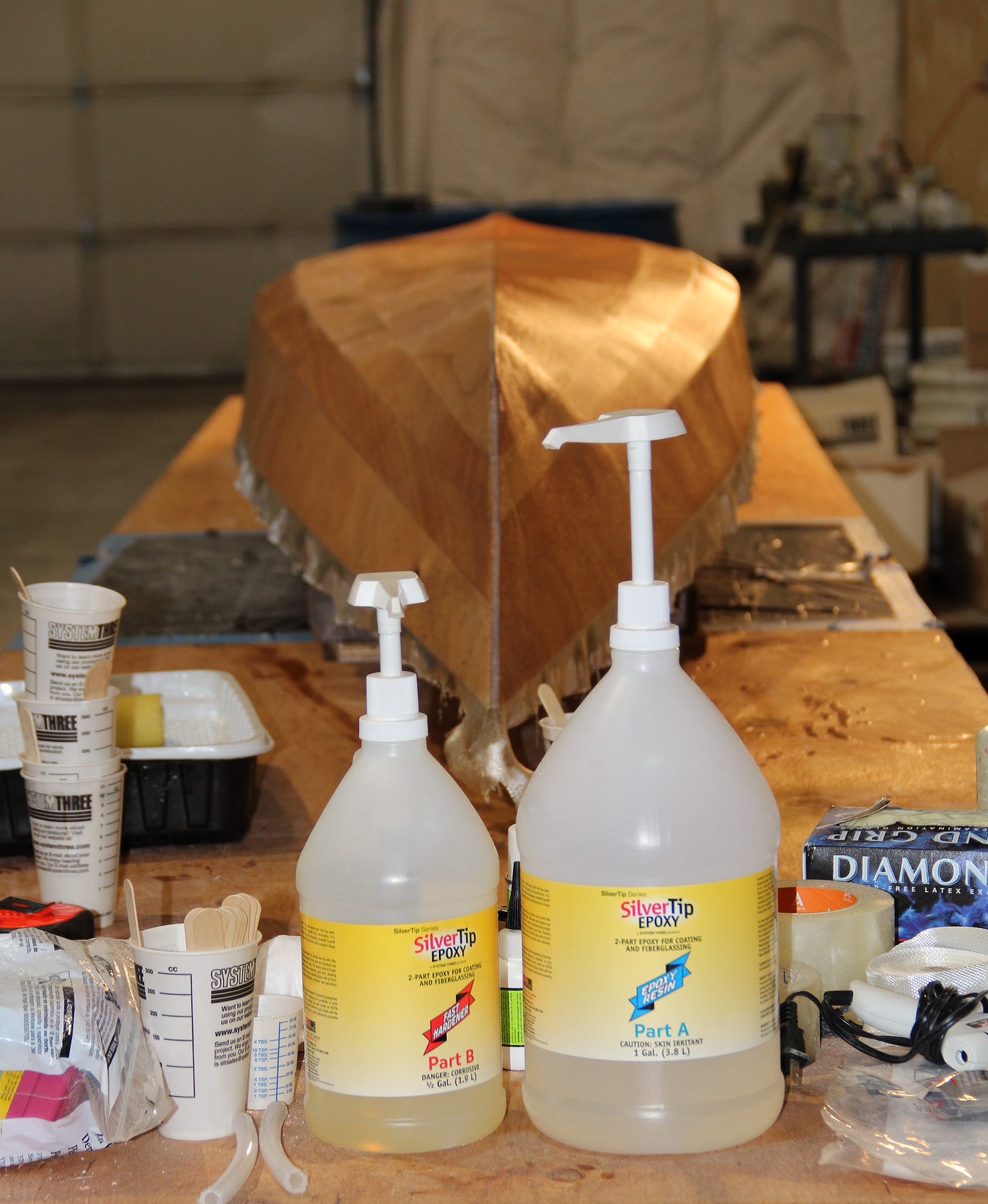From the Glen-L Newsletter
Epoxy is expensive so why waste any of it? In the following discourse we’ll give a few suggestions on how not to be wasteful with this pricey material.
Marine epoxies consist of a resin "A" and a hardener "B" mixed in proportions as per the product requirements. Common ratios of hardener to resin are 1:1, 1:2, or 1:5, meaning that a 1:5 ratio is one part hardener "B" and five parts resin "A". NEVER vary the ratio of resin to hardener specified by the manufacturer.
The instant the resin and hardener are mixed together a chemical reaction takes place. The "pot life" (i.e. the length of time the mixed epoxy remains workable) will vary depending upon the type of hardener used ("fast" or "slow") and the temperature. Resin cures faster when in a concentrated mass, at higher temperatures, when local heat is applied, or when products are pre-warmed. Conversely, resin cures slower when well dispersed, at lower temperature, in shaded areas, or when products are cooled. Unless stated otherwise by the manufacturer, don't use epoxy when the temperature is less than 60 degrees Fahrenheit or higher than 85° F; 72° F is ideal.
Economize on the use of epoxy by thinking through what you are doing before beginning your task.
The best mixing containers are flexible, with graduated markings and made from polyethylene. Don't use glass or foam plastic containers. A good mixing method is to use three containers; one for resin (A), one for hardener (B), and one for mixing the two ingredients together. Don't try mixing large batches; mix smaller amounts so all of it can be used before it gels. Pour out the proper proportion in each container but don't combine them. When the mixed epoxy being used is exhausted combine the hardener and resin together in the mixing container. Having a helper mix "A" and "B" together on command will speed the process. Once the products are dispensed into the mixing container stir thoroughly for at least one minute or more. Stir from the bottom up and scrape the sides of the mixing container. Improper mixing can result in a product that will not cure properly, which is wasteful and a mess to remove.
If a batch of epoxy has been mixed, the task accomplished, and there is epoxy left over don't discard it unless it has gelled. Instead use it to encapsulate an area, or mix it with fillers and fill some screw holes or imperfections. Think of how any surplus can be used before you start your work.
Most waste resin through carelessness. Using the improper resin/hardener proportions, not mixing them together thoroughly, or mixing more than can be used before gellation are all wasteful practices. Economize on the use of epoxy by thinking through what you are doing before beginning your task.
Never was the old adage "Look before you leap" more appropriate. •SCA•




In 40 years of building boats, have personally used all the brands of epoxy in the survey and I can say that my least favorite is West. Perhaps they have changed but the formula, back when I tried it, was far inferior. It tended to blush much more than the others and the 5:1 ratio is more trouble to get right. Finally, it is just as expensive as the really good epoxy, that being System3 Silvertip. That's the brand I voted for. It uses a 2:1 mix ratio and I have never seen it blush. The thing that really sets S3 apart is the fact that you can sand it an hour after it begins to kick - not three or four hours as with other epoxies.
U.S. Composites. Working good so far.